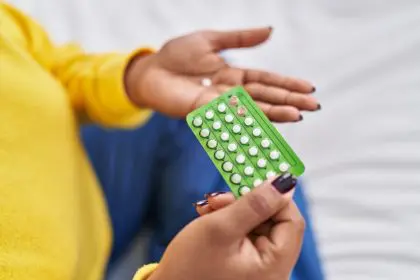The journey of intrauterine device (IUD) placements has long been accompanied by mixed reactions, ranging from mild discomfort to excruciating pain. As of 2023, IUDs have gained immense popularity, with one in five women of reproductive age choosing this method of contraception. However, the painful reality of insertion continues to be a critical issue that healthcare professionals are increasingly striving to address.
Understanding the pain behind IUD insertions
Despite its effectiveness as a long-term birth control method, IUD placement often comes with significant pain. Nearly half of all women undergoing the procedure report intense pain, while 47% describe light to moderate discomfort. Only a tiny fraction, around 2.5%, experience no pain. For women who have never given birth, the experience tends to be especially painful.
Research spanning decades has underscored these issues, yet many women feel their pain has been downplayed or dismissed by healthcare providers. This has led to growing advocacy for improved pain management techniques and tools.
Promising innovations for pain relief
In 2023, a game-changing tool emerged from Swiss start-up Aspivix. The FDA approved its Carevix device, designed to make IUD insertions significantly less painful. Unlike conventional methods that rely on metal tools to grasp the cervix, Carevix uses a gentle suction mechanism. Early clinical trials suggest Carevix could reduce pain by up to 73% and bleeding by 83%, a monumental improvement for women’s health.
Another major shift occurred when the Centers for Disease Control and Prevention (CDC) updated its guidelines, urging providers to prioritize patient comfort by discussing pain management options before the procedure.
Patient-centered care gains traction
Leading gynecologists like Dr. Alison Edelman and Dr. Katharine White are at the forefront of the movement towards more compassionate, patient-centered care. These experts emphasize that listening to patients and offering tailored pain management strategies is essential. The CDC’s new guidelines reflect this growing trend, encouraging women to advocate for themselves and seek providers who prioritize their comfort.
A potential game changer
The introduction of Carevix marks a significant advancement in gynecological tools. Traditional instruments often cause discomfort by aggressively pinching the cervix. In contrast, Carevix uses a half-moon-shaped suction device that gently holds the cervix in place, reducing the pain associated with insertion.
Patients who have experienced Carevix report drastically improved comfort. Taylor Townsell, one of the early users, described it as a far gentler experience compared to older tools. Her positive feedback echoes the sentiments of many women who are hopeful that Carevix will become widely available.
Barriers to widespread pain management
Despite these advancements, significant obstacles remain. Access to the latest tools and pain management techniques is not universal. Insurance coverage varies widely, leaving many women unable to afford enhanced care. A recent survey revealed that only 4% of U.S. doctors offer local anesthesia for IUD insertions, despite its potential to make the procedure more tolerable.
This lack of access can deter women from choosing IUDs as a contraception method, highlighting the need for systemic changes in healthcare policies and practices.
The power of patient advocacy
Personal experiences play a crucial role in shaping perceptions of IUD placement. Jenna Smith, for instance, had two relatively painless insertions but grew anxious after hearing horror stories from friends. By voicing her concerns to her doctor, she was able to ensure a more supportive and comfortable environment during her third procedure.
This example underscores the importance of advocating for oneself. Women should feel empowered to communicate openly with their healthcare providers and demand appropriate pain management options.
New innovations on the horizon
The future of IUD technology looks promising, with researchers exploring various ways to improve the experience. Frameless IUDs and alternative materials are currently being developed to enhance comfort and efficacy.
A noteworthy innovation in progress is a nonhormonal IUD from researchers at Western University. This device uses iron instead of copper, which could address some of the issues women face with existing IUDs. These advancements reflect a broader commitment to improving women’s health.
Empowering women with information
For those considering an IUD, preparation and knowledge are key. Here are some actionable tips:
- Explore pain management options: Discuss available strategies with your healthcare provider before scheduling the procedure.
- Create a calming environment: Opt for clinics that offer soothing elements like music or aromatherapy to ease anxiety.
- Speak up: Don’t hesitate to voice concerns or discomfort during the procedure.
These steps can make a significant difference in your experience, helping you feel more in control and comfortable.
A more compassionate future
The ongoing conversation around IUD pain highlights the importance of compassionate, patient-centered care. With tools like Carevix and a growing emphasis on listening to women’s experiences, the landscape of gynecological care is slowly shifting.
However, systemic barriers need to be addressed to ensure all women have access to the best possible care. Advocacy, innovation, and policy changes will be critical in achieving this goal.
As we continue to prioritize women’s health, acknowledging and addressing pain with empathy and cutting-edge solutions will pave the way for a more equitable and supportive healthcare system.













